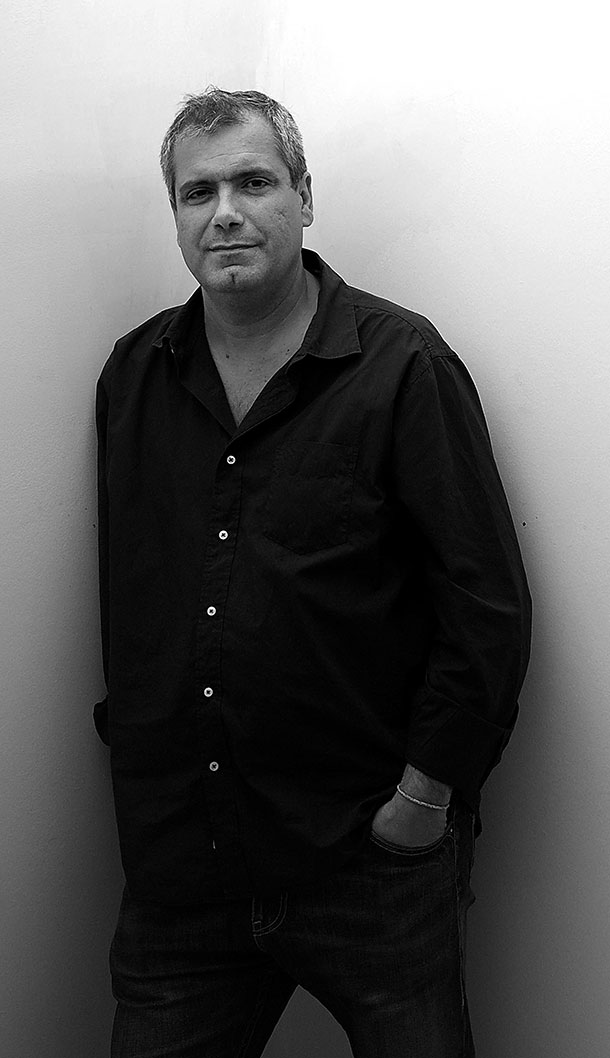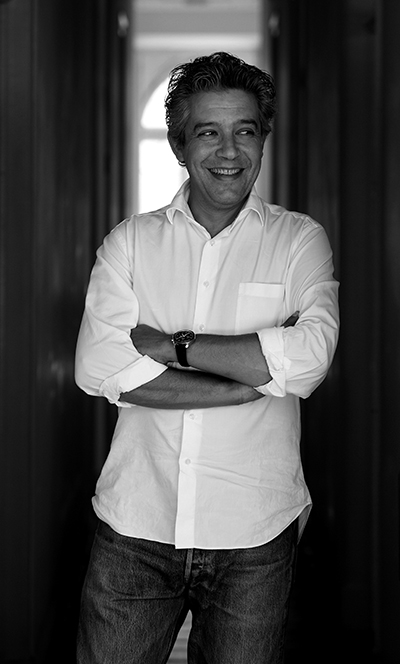Emmanuel Ventura, Cantonal Architect, Direction of Architecture and Engineering.
In October 2015, after an international architectural competition, Portuguese firm Aires Mateus was selected to design the building that would house the Photo Elysée and mudac. The architects’ “One Museum, Two Museums” project focuses on two solid volumes that contain an empty space that expands and compresses, creating random geometric shapes.
A central staircase leads to the exhibition halls of the Photo Elysée on the ground floor and mudac on the second floor. The halls, double the size of the museums’ previous buildings, are modular and can be adapted according to the presentation of the collections and the scenography of the temporary exhibitions. The repositories and technical services in the basement guarantee optimal conservation of the collections, while the administrative areas surround the central building to the north and west, which is itself entirely devoted to the public.
Light is an essential element of the building’s architectural concept. Natural light wells, such as the gap and the terrace overlooking the lake, present artworks in their best light. The gap also creates a circulation effect between inside and outside, top and bottom, symbolizing the link between the two museums as well as a desire to be open to the public domain.
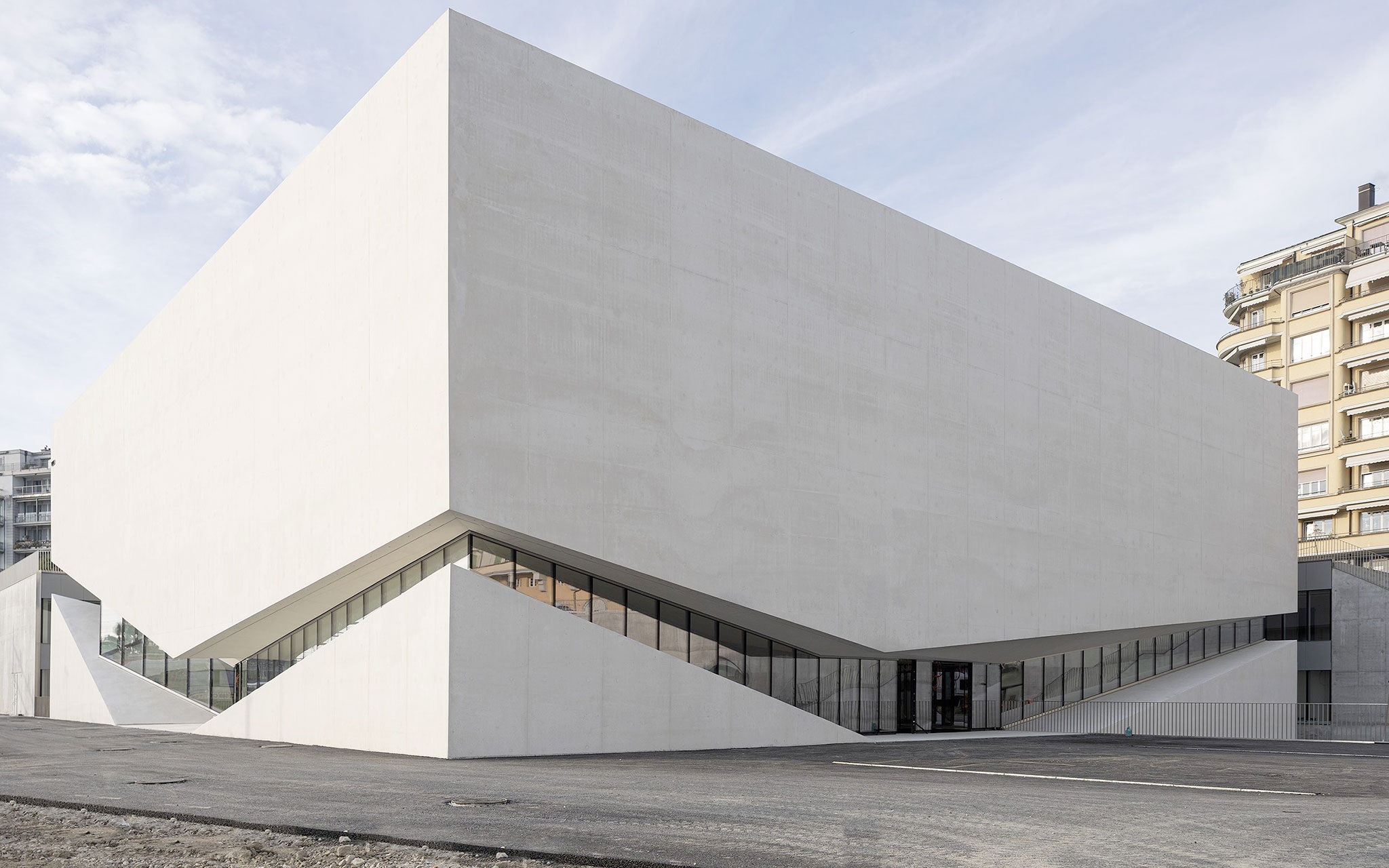
Photo Elysée and mudac by Aires Mateus. Photograph by Mathieu Gafsou
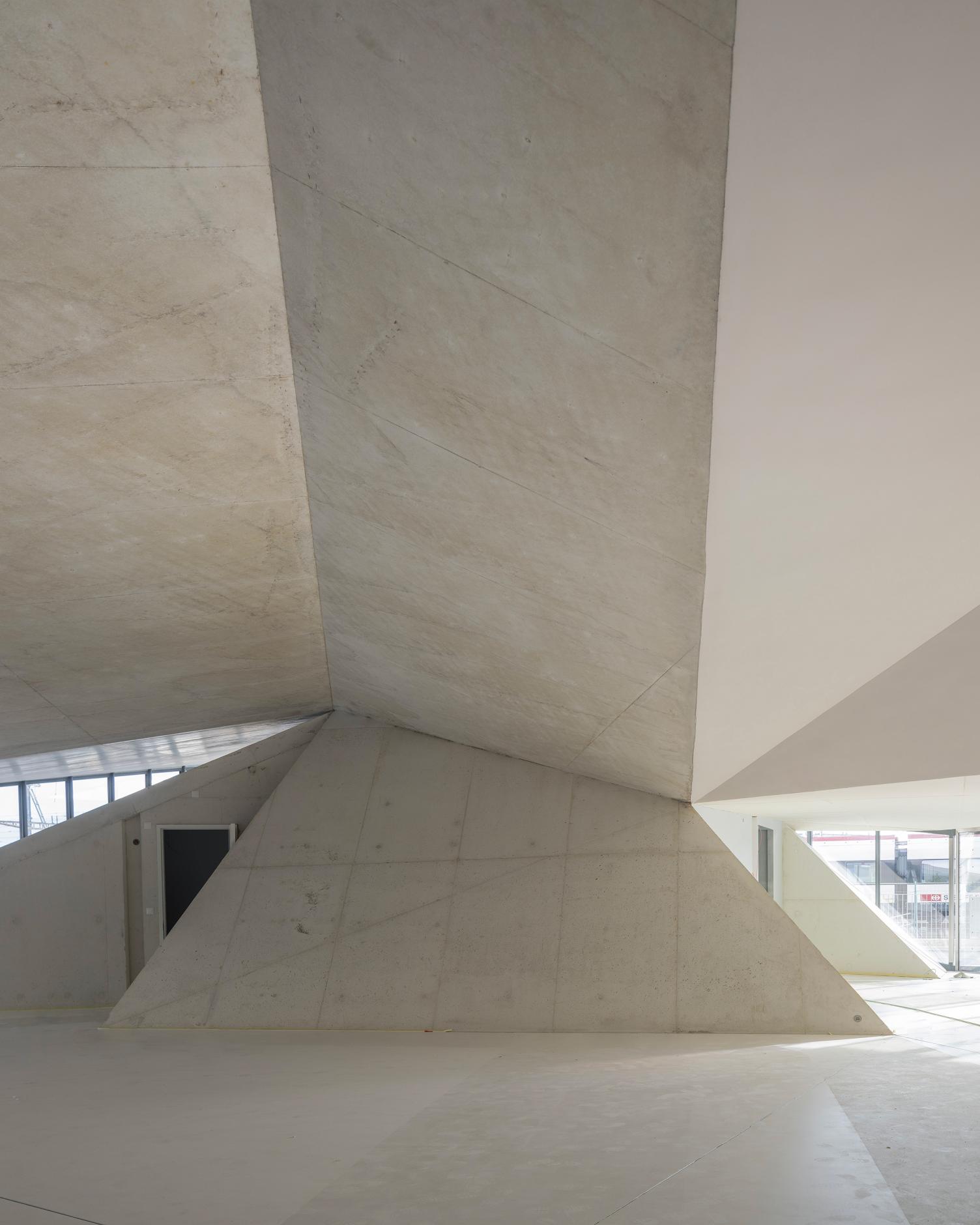
Photo Elysée and mudac by Aires Mateus. Photograph by Mathieu Gafsou
The project by Portuguese architects Aires Mateus brings together the overarching complementary nature of the two museums, distributed on either side of the luminous gap that signals the shared entrance. A forum open on all four sides, this entrance hall gathers together the museums’ shared functions: reception, bookshop and cafeteria.
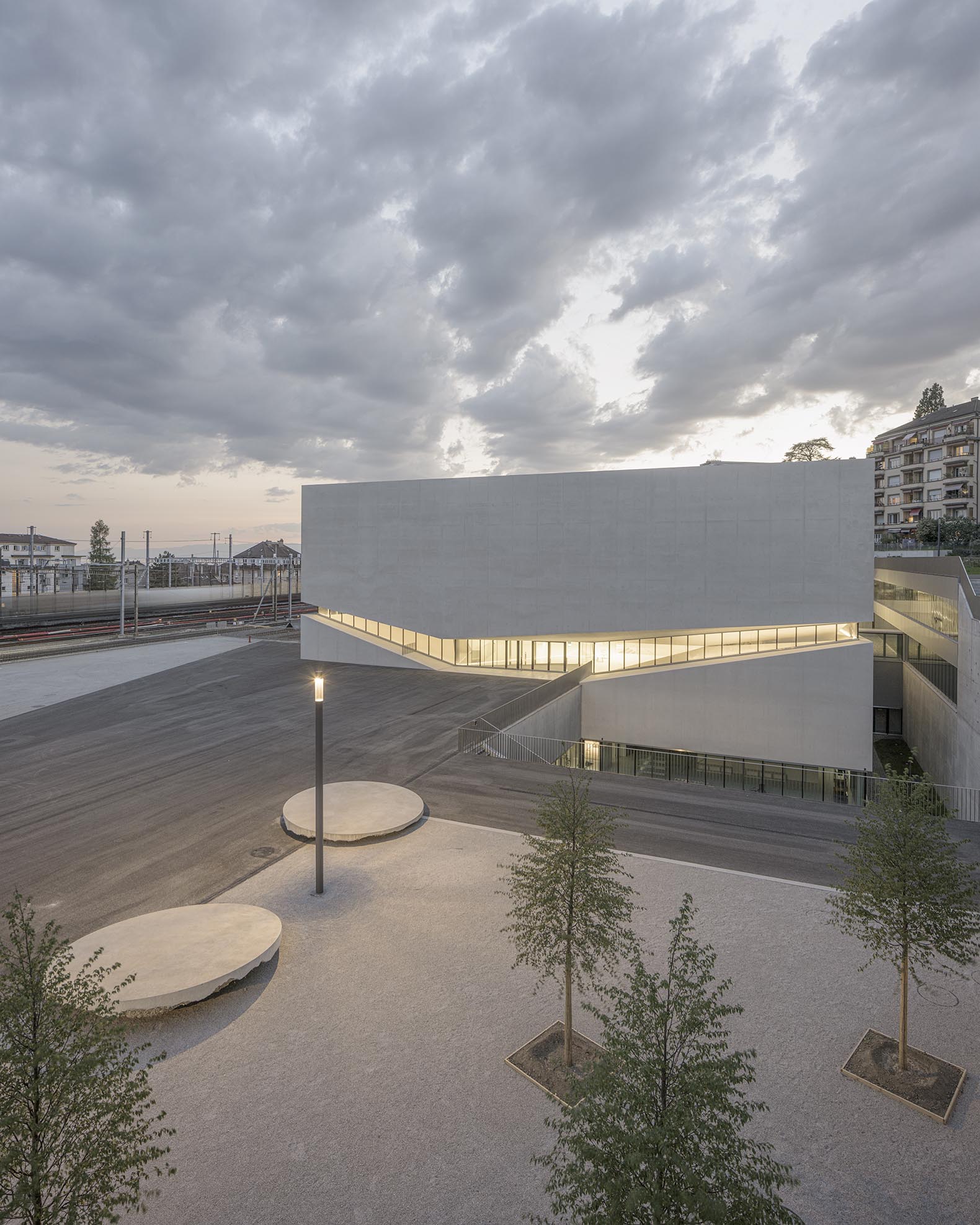
Photo Elysée and mudac by Aires Mateus. Photograph by Mathieu Gafsou
Photo Elysée, located at the base of the new building, has a total surface of 3,800 square meters. The exhibition halls, whose scenography has been designed by Studio Adrien Gardère, have been enlarged and will host, alongside temporary exhibitions, a free exhibition of the museum’s collections, a free-access cultural outreach area and the LabElysée, an innovative space for digital experimentation...
The museum also has three storerooms with different climates: a 6°C storeroom for soft negatives, a 10°C storeroom for colour prints and a 17°C storeroom for monochrome prints.
mudac has nearly 1,500 square meters of floor space for its temporary or semi-permanent exhibitions, while the cultural outreach area, set up in the heart of the exhibition halls, covers 89 square meters. mudac’s exhibition area has been doubled, thereby opening the possibility of large-scale projects to be carried out. The promotion of the museum’s collections in dynamic, scalable and innovative modes of presentation also allows for cultural outreach projects aimed at different groups.
In addition, an area dedicated to small specific projects can be used as needed and thus respond to current events or echo an exhibition of the Musée Cantonal des Beaux-Arts (MCBA) or the Photo Elysée.











































